Welcome to Naha, the vibrant capital of Okinawa, where history and culture meet tropical beauty.
Our latest blog post explores the 10 best beautiful places in Naha, each offering a unique glimpse into the city’s rich heritage and stunning natural landscapes.
From the historic grandeur of Shuri Castle to the bustling charm of Kokusai Dori Street, join us as we discover the top spots that make Naha a must-visit destination in Japan.
- Recommended BEST Tours in Naha
- Recommended Naha Hotels
- Cheap Flights, Airline Tickets & Plane Tickets (TRIP.COM)
Number 10: Naminoue Shrine.
Starting our countdown at number 10 is Naminoue Shrine, a revered spiritual site uniquely perched atop a bluff overlooking the beach in Naha, Okinawa. This picturesque location where spirituality meets the sea makes Naminoue Shrine a place of worship and a destination offering breathtaking ocean views that draw pilgrims and tourists alike.
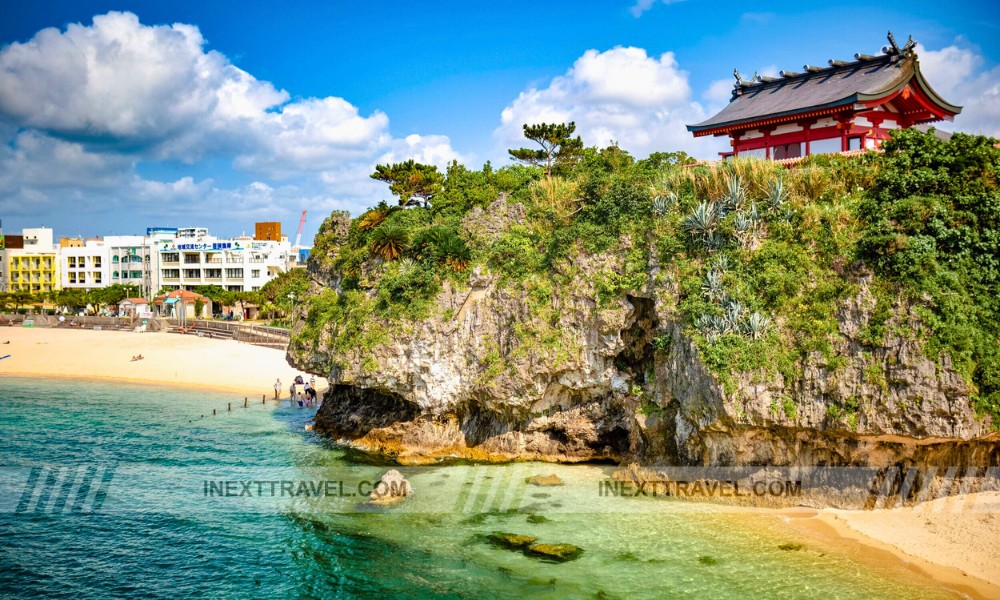
The name “Naminoue” itself means “above the waves,” aptly describing its stunning position above the clear blue waters of the Pacific. As Okinawa’s most important Shinto shrine, it plays a pivotal role in the local community, hosting various traditional ceremonies and festivals throughout the year that reflect the island’s rich cultural heritage.
Originally dedicated to the sea gods and later to Nirai Kanai, the mythical source of all life according to Ryukyuan beliefs, Naminoue Shrine has a deep spiritual significance. It has been a worship site since the Ryukyu Kingdom era, evolving over centuries to symbolize the intertwining of native Okinawan and Shinto religious practices.
Visitors to Naminoue Shrine can explore its serene grounds, which feature traditional Ryukyuan architectural elements, stone lanterns, and a torii gate that starkly contrasts against the backdrop of the modern city and the vast ocean. The shrine’s unique location makes it a perfect spot for quiet contemplation and offers peace away from the bustle of city life below.
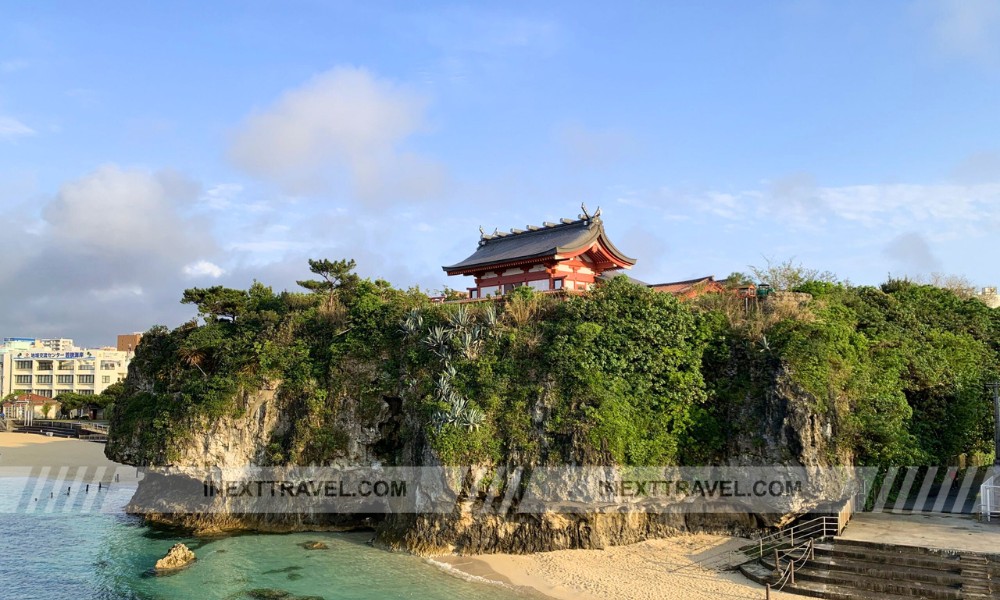
In addition to its spiritual and cultural value, the shrine’s surrounding area, including the adjacent Naminoue Beach, provides a scenic spot for relaxation and recreation. Locals and visitors can enjoy the sun and sea steps away from a sacred site. This blending of natural beauty with spiritual significance makes Naminoue Shrine a uniquely appealing destination, embodying the harmonious relationship between nature and spirituality, a hallmark of Okinawan culture.
Number 9: Tsuboya Pottery District.
At number 9, we explore the Tsuboya Pottery District, a vibrant and historic quarter of Naha renowned for its traditional Okinawan pottery. This district serves as the heart of pottery production in Okinawa. This craft had flourished here since the 17th century when the Ryukyu Kingdom consolidated all pottery-making activities in this area better to control the quality and production of the ware.
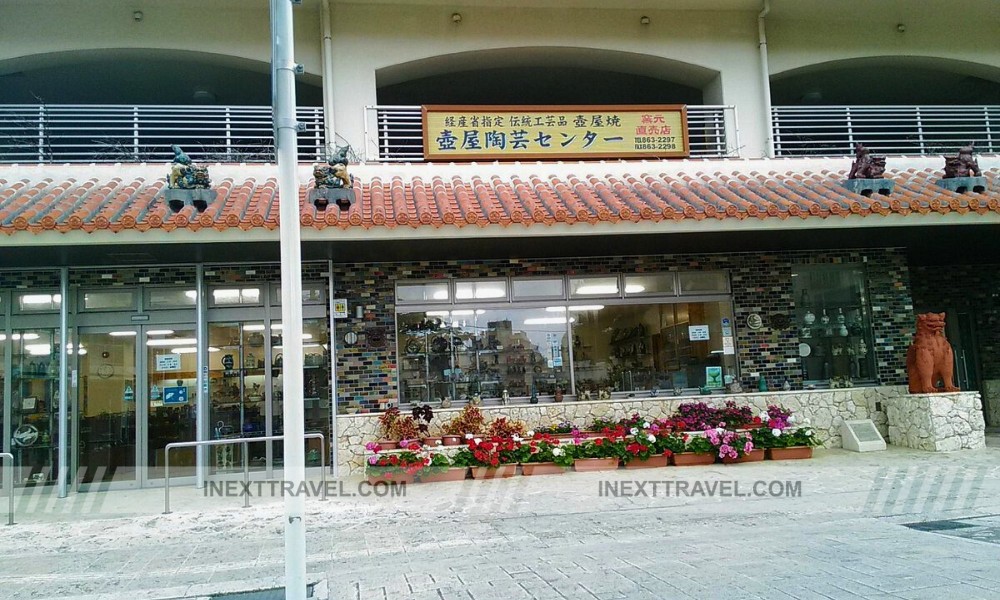
Walking through the narrow, winding streets of Tsuboya, visitors are greeted by an array of quaint workshops and charming galleries displaying a wide variety of Okinawan ceramics known for their distinctive earthy colors and intricate patterns. These ceramics include everything from functional kitchenware, such as bowls and jars, to decorative art pieces, each reflecting the unique blend of Japanese, Chinese, and native Okinawan influences that characterize the Ryukyu aesthetic.
The Tsuboya Pottery District is not only a place for purchasing pottery; it is an immersive cultural experience. Many workshops in the district offer hands-on pottery-making sessions, allowing visitors to learn from experienced artisans. These sessions provide a rare opportunity to engage directly with the traditional techniques passed down through generations, such as using a conventional kick-wheel and the distinctive Okinawan glazing and firing methods.
The district also hosts the Tsuboya Pottery Museum, which delves into the history of the craft in the region, showcasing ancient pottery pieces, detailing the evolution of styles and techniques, and celebrating the lives of renowned local potters. This museum enhances the visitor experience by providing deeper context to the pottery seen and made in Tsuboya, illustrating how this art form has been an integral part of Okinawan daily life and culture.
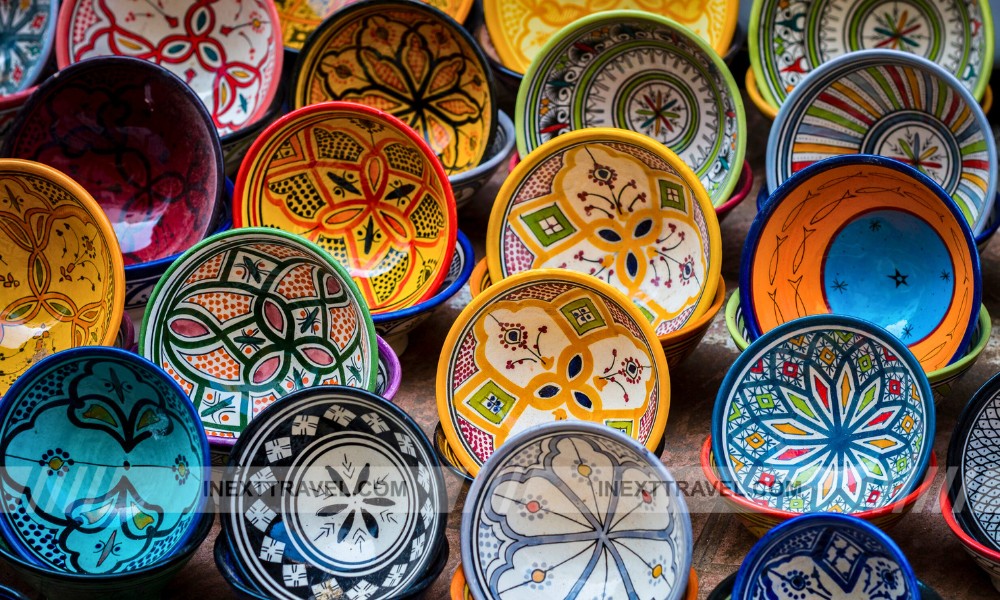
Tsuboya’s lively atmosphere, enriched by its history and the ongoing creativity of its artisans, makes it a captivating destination for those looking to understand and participate in Okinawa’s rich cultural heritage. A stroll through the Tsuboya Pottery District is a must for anyone visiting Naha. Here, you can take home a piece of Okinawan art and create your own under the guidance of skilled local potters.
Number 8: Tsushima-maru Memorial Museum.
At number 8, we visit the Tsushima-maru Memorial Museum in Naha, a profoundly moving and significant site dedicated to one of the most heartrending episodes in Okinawa’s history. The museum commemorates the tragic sinking of the Tsushima-maru. This cargo ship was repurposed to evacuate civilians, predominantly children, from Okinawa during the intensifying conflicts of World War II. Tragically, on August 22, 1944, the ship was sunk by an American submarine, leading to the loss of over 1,400 lives, many of whom were schoolchildren.
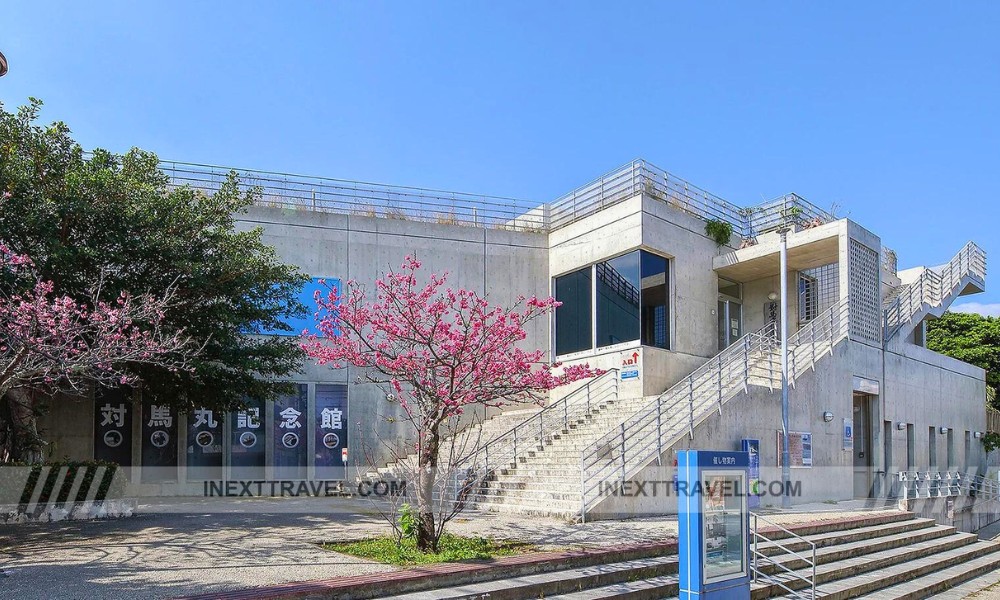
The Tsushima-maru Memorial Museum serves as a sad reminder of the impacts of war on innocent lives. It offers visitors a poignant look into the events leading up to the disaster, the lives of those on board, and the aftermath of the sinking. The museum’s exhibits include personal belongings recovered from the wreckage, photographs, and narratives that tell the stories of the passengers. Interactive displays and documentary films provide further context, helping visitors understand the historical and cultural significance of the event.
One of the museum’s most touching features is the Children’s Room, which focuses on the young lives lost in the tragedy. Here, visitors can see the names and learn about the individual stories of the children, bringing a personal dimension to the historical facts. The room is designed to be a space of reflection and remembrance, encouraging visitors to contemplate the profound effects of war on communities and families.
The Tsushima-maru Memorial Museum also plays an educational role, aiming to promote peace and reconciliation. It serves as a resource for learning about the broader context of World War II in the Pacific and the specific challenges faced by Okinawa during and after the war. The museum’s location in Naha, close to other historical sites and monuments, allows it to be part of a larger narrative about Okinawa’s painful yet resilient history.
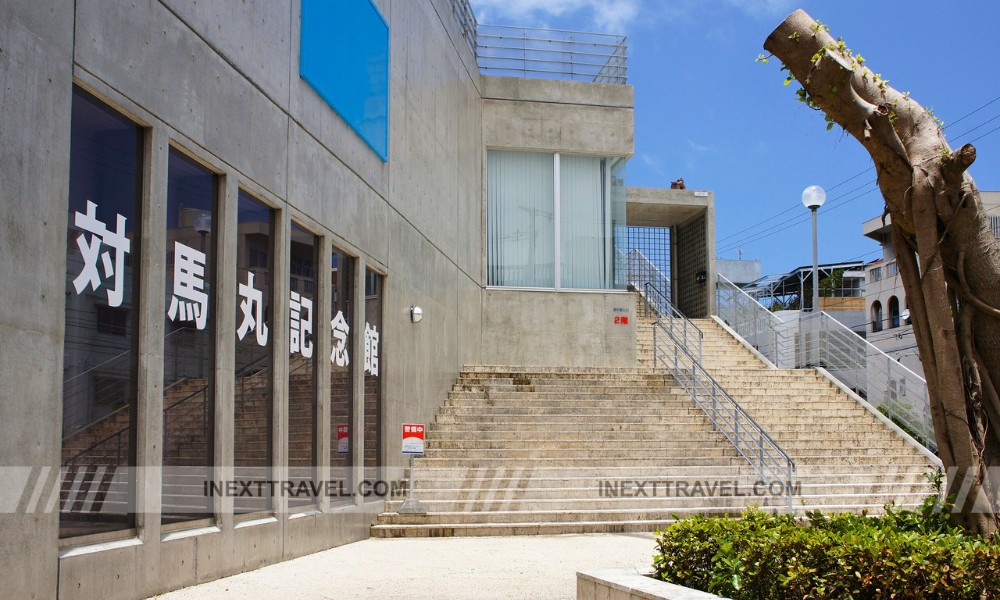
In summary, the Tsushima-maru Memorial Museum is not just a museum; it’s a memorial that honors the memory of those who perished in a tragic chapter of Naha’s history. It challenges visitors to reflect on the consequences of conflict and underscores the importance of peace. A visit here is an emotional, educational experience that leaves a lasting impression on all who walk through its doors.
Number 7: Naha City Museum of History.
At number 7, we find the Naha City Museum of History, an enriching cultural institution within the beautifully reconstructed Naha City Hall. This museum is a treasure trove of information and artifacts that provide deep insights into the fascinating history of Naha and the broader Ryukyu Kingdom, which once thrived as an independent kingdom before becoming part of Japan.
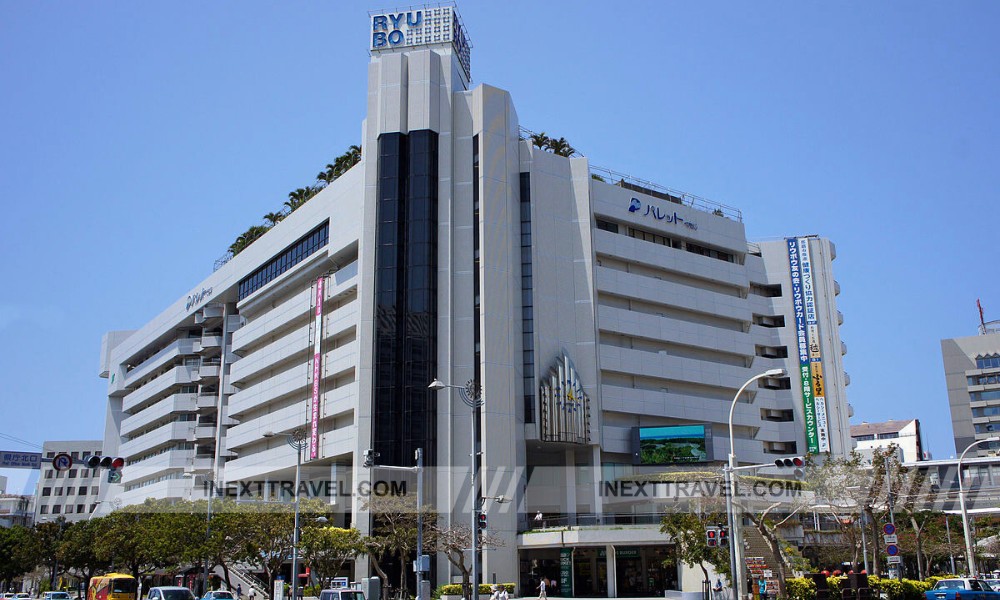
The Naha City Museum of History is a gateway to understanding Okinawa’s unique cultural and historical landscape. The museum’s collection includes several centuries-old artifacts illustrating the rich tapestry of Ryukyu culture, politics, and economy. Notable exhibits feature traditional Ryukyu costumes, ceramics, lacquerware, and historical documents telling the story of a culturally rich and politically complex island society engaged in vibrant trade and diplomatic relations with neighboring countries like China, Japan, and Southeast Asian kingdoms.
Interactive exhibits enhance the visitor experience by bringing the past to life through advanced multimedia presentations and hands-on displays. These interactive elements are designed to engage visitors of all ages, making the complex history of the Ryukyu Kingdom accessible and compelling. They highlight significant events such as the kingdom’s golden era of trade, its eventual annexation by Japan, and the devastating impacts of World War II on Okinawa.
The museum also dedicates space to exploring Naha’s evolution from a historical trade hub into the modern capital of Okinawa Prefecture. This includes post-war reconstruction, economic development, and the ongoing efforts to preserve Okinawan culture amidst modernization and globalization. Such displays offer a comprehensive view of Naha’s dynamic history and resilient spirit.
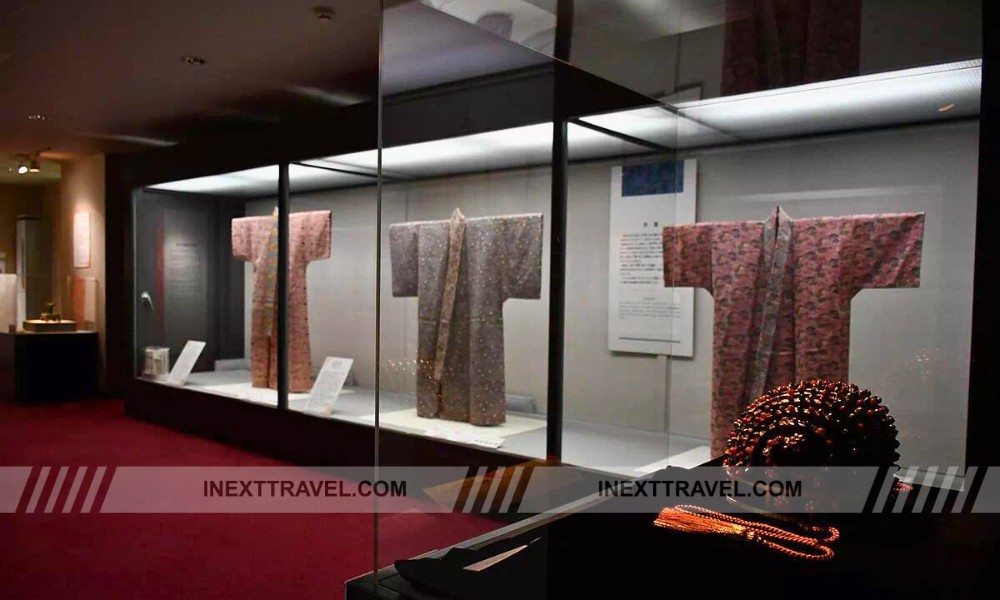
Moreover, the museum’s location within the historic Naha City Hall allows visitors to appreciate the city’s architectural heritage. The building itself, a reconstruction, has been carefully designed to reflect traditional Ryukyu architectural styles, adding an authentic backdrop to the historical narratives contained within.
In conclusion, the Naha City Museum of History is not merely a repository of objects but a vibrant educational center that offers insights into the complex tapestry of Naha’s and Okinawa’s past. It invites visitors to explore, learn, and reflect on this distinctive region’s unique cultural heritage and historical journey, making it a must-visit destination for anyone seeking to deepen their understanding of Naha and the Ryukyu Islands.
Number 6: Makishi Public Market.
At number 6, immerse yourself in the bustling energy of Makishi Public Market, a cornerstone of daily life in Naha and a must-visit destination for any food lover. This vibrant market, located in the heart of Naha, is where locals and tourists experience the authentic flavor of Okinawa through its wide array of fresh produce, seafood, and other culinary delights.
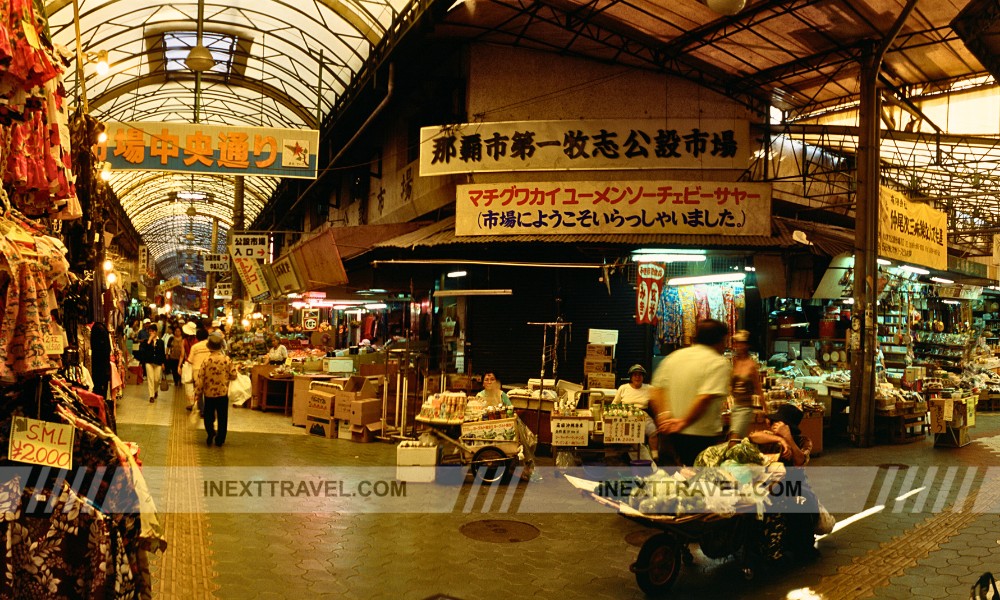
Makishi Public Market is renowned for its fresh seafood selection, which is among the best in the region. Here, you can find everything from brightly colored tropical fish to squid and octopus, all caught in the nearby waters and delivered fresh each morning. Visitors have the unique opportunity to select their seafood and have it prepared on the spot at one of the upstairs restaurants, offering a dining experience that is as fresh as it gets.
But the market offers more than just seafood. It’s also the perfect place to sample exotic fruits unique to the subtropical climate of Okinawa, such as passion fruit, mango, and the famously large and sweet Okinawan pineapples. Alongside these, the market stalls are laden with various local vegetables and spices, including bitter melon and turmeric, staples of Okinawan cuisine known for their health benefits.
Okinawan specialties are another highlight of the Makishi Public Market. This includes local delicacies such as Okinawa soba noodles, goya champuru (bitter melon stir-fry), and the much-loved pork dishes, a distinctive part of the island’s culinary tradition. The market is also great for awamori, a traditional Okinawan distilled spirit available in various aged varieties.
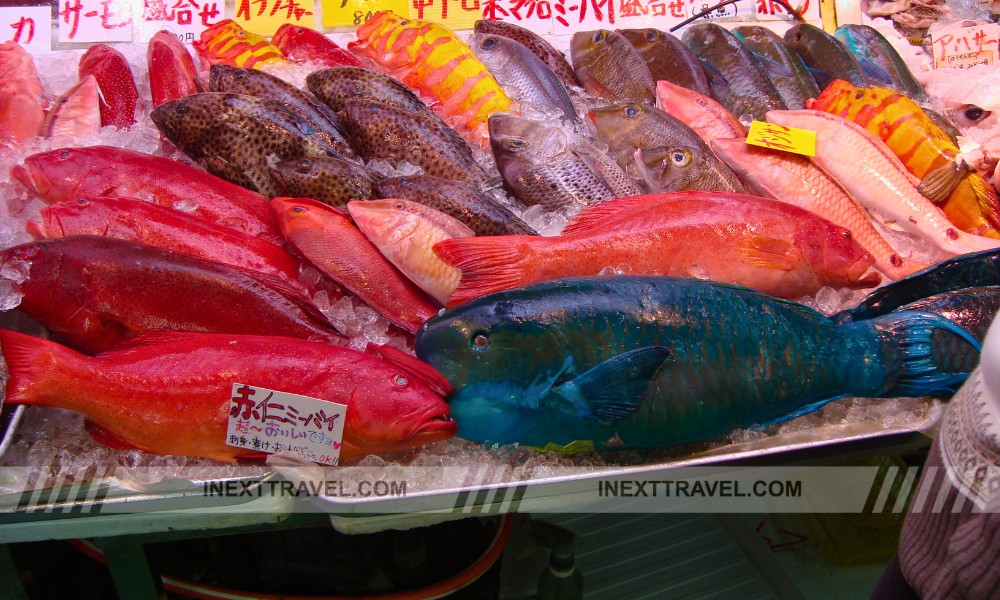
The atmosphere in Makishi Public Market is lively and colorful, with vendors calling out their wares and offering samples to passersby. The narrow aisles bustle with activity, creating a dynamic environment that is both chaotic and charming. Visitors can shop and engage with local culture, learning about the food and traditions that make Okinawa unique.
In conclusion, Makishi Public Market is not just a place to buy food; it’s an experience that engages all the senses. It offers a window into Naha’s daily lives and provides an authentic taste of Okinawan culture and cuisine. Whether you’re a food enthusiast or looking to soak up the local atmosphere, Makishi Public Market promises a memorable and sensory-rich visit.
Number 5: Shikina-en Garden.
At number 5, Shikina-en Garden offers a serene escape into the traditional landscape gardening of the Ryukyu Kingdom. Created in the late 18th century by the Ryukyu royal family, this historic garden served as a villa for the royal family and a reception area for envoys from the Chinese Emperor. Today, it is a beautifully preserved example of the fusion between Japanese and Chinese landscape gardening techniques unique to Okinawa.
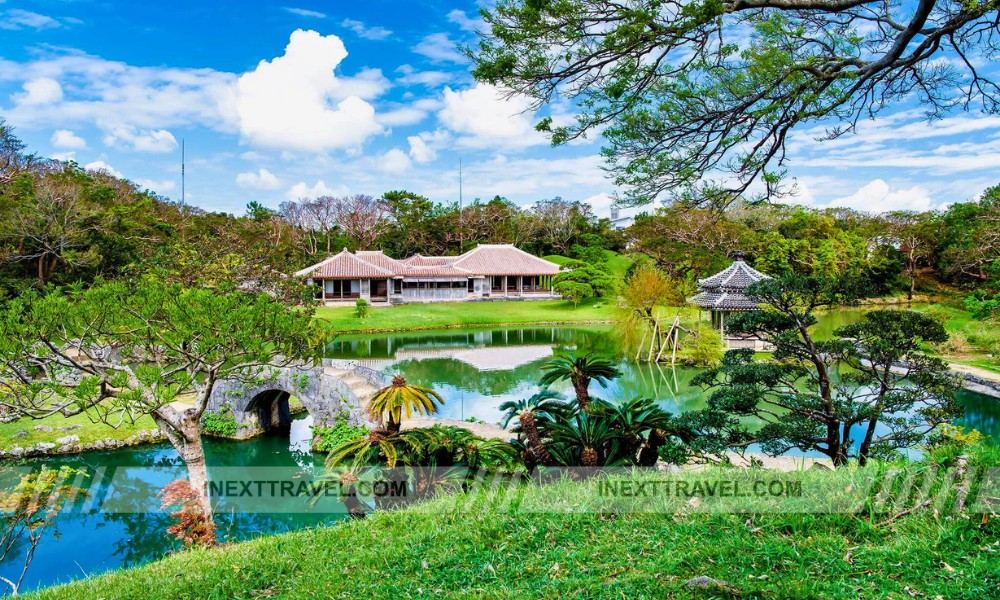
Shikina-en Garden is characterized by its circular walking path, which leads visitors through various meticulously crafted landscapes. Central to the garden’s design is a large, central pond that mirrors the sky and surrounding greenery, creating a tranquil and reflective environment. The paths meander around this pond, leading to several small bridges and islands that offer picturesque views and quiet spots for contemplation.
Adjacent to the pond is the garden’s main architectural feature, a traditional Okinawan-style villa known as the “dun.” This wooden structure exemplifies the simplicity and elegance of Ryukyu architectural design, with its red tiled roof and white plastered walls contrasting the garden’s lush greenery. The villa’s interior, though sparsely furnished, reflects the lifestyle of the Ryukyu royalty with tatami mats, sliding doors, and wood-carved decorations that emphasize natural beauty and understated elegance.
The garden also features several secondary landscapes, including a bamboo grove and a stone garden, each designed according to different aspects of traditional East Asian aesthetics. These areas complement the main pond and villa, providing a diverse yet harmonious garden experience that changes with the seasons. The cherry blossoms in spring and fiery maple leaves in autumn particularly transform the garden, making each visit uniquely beautiful.
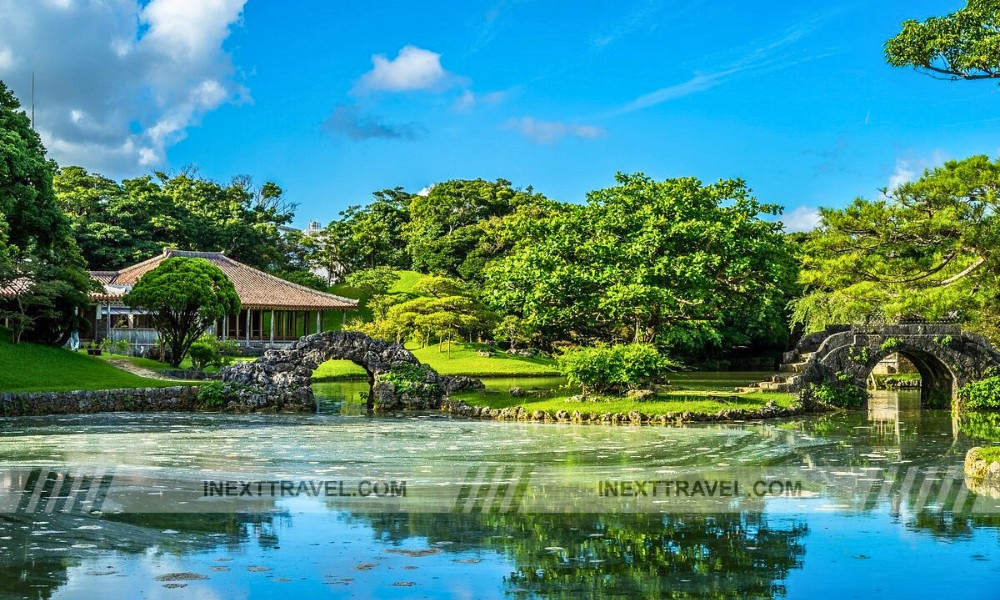
Shikina-en Garden was designated a UNESCO World Heritage Site as part of the Gusuku Sites and Related Properties of the Kingdom of Ryukyu, recognizing its cultural and historical importance. This designation highlights the garden’s beauty, design, and significance in Okinawa’s history and cultural identity.
Visiting Shikina-en Garden offers more than just a visual treat; it’s an opportunity to walk through history and experience the peace and tranquility that royalty once enjoyed. It remains a testament to the cultural synthesis and artistic achievements of the Ryukyu Kingdom, making it a must-visit for anyone interested in the unique cultural heritage of Okinawa.
Number 4: Okinawa Prefectural Museum & Art Museum.
At number 4, the Okinawa Prefectural Museum & Art Museum is a comprehensive cultural institution that provides a deep dive into the rich tapestry of Okinawa’s natural history, arts, and culture. Located in the heart of Naha, this modern facility combines a museum and an art gallery, offering a multifaceted view of Okinawa’s unique heritage and contemporary artistic expressions.
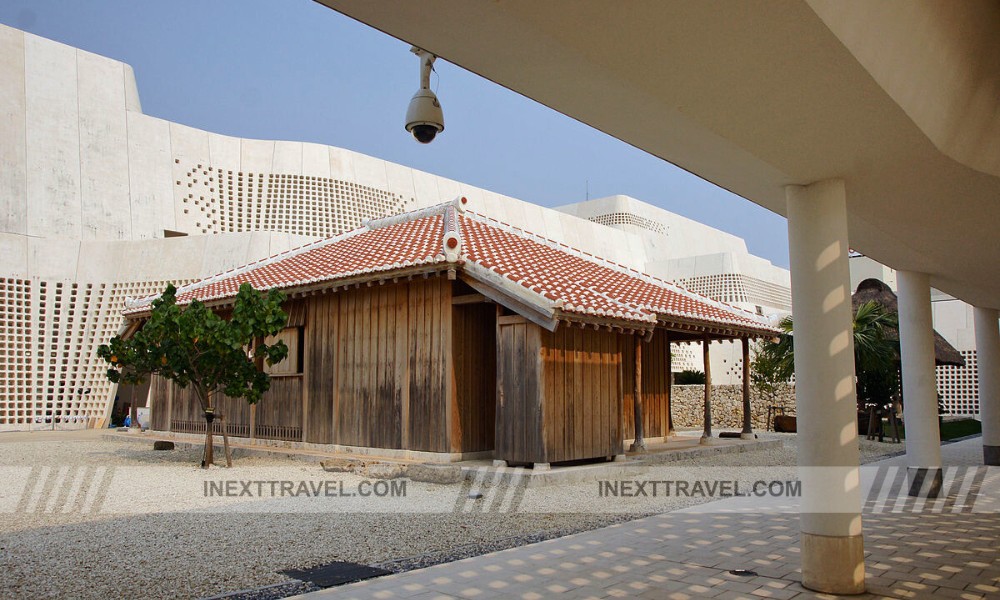
The museum section delves into Okinawa’s diverse ecosystems and geological features, displaying an array of artifacts from the prehistoric to the present day. Exhibits cover the region’s distinct flora and fauna, traditional Ryukyuan crafts, and daily life throughout Okinawa’s history.
This includes a detailed look at the Ryukyu Kingdom, providing insights into its social structure, trade networks, and pivotal role in East Asian maritime interactions. Additionally, the museum does not shy away from the more tumultuous periods in Okinawan history, offering educational displays on the significant impacts of World War II and the subsequent American administration of the islands.
Adjacent to the museum, the art museum section features a rotating selection of exhibitions that showcase traditional Okinawan art forms, such as lacquerware, textiles, and pottery, as well as contemporary works by local artists. These exhibitions highlight the evolution of artistic styles in the region and how these practices reflect Okinawa’s broader social and cultural currents. The art museum also serves as a platform for international exchange, hosting special exhibitions that bring global perspectives into dialogue with local traditions.
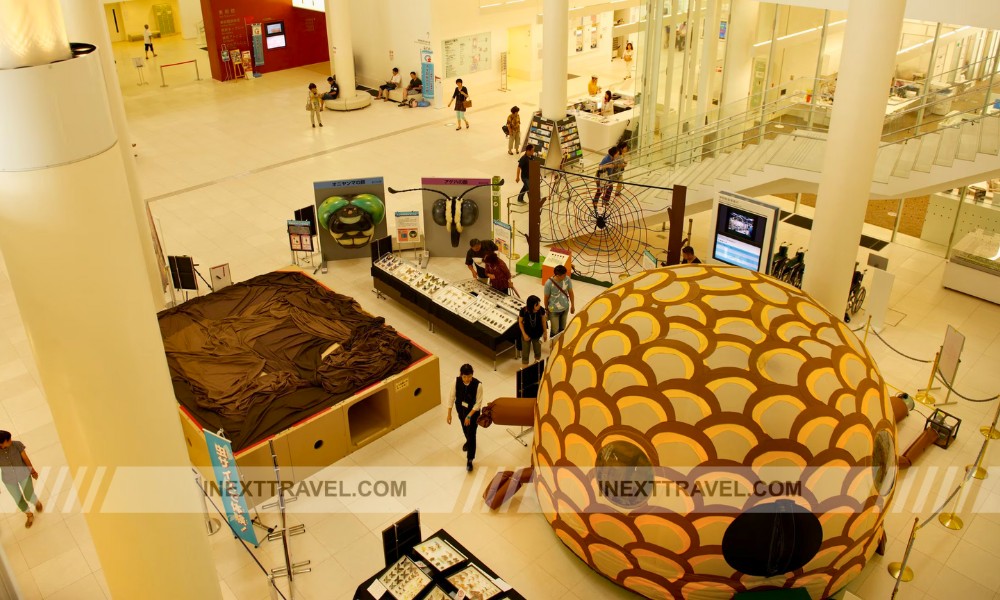
The Okinawa Prefectural Museum & Art Museum’s architecture reflects Okinawan culture, incorporating local materials and design elements that harmonize with the surrounding environment. The complex is designed to be accessible and engaging for all ages, with interactive exhibits and educational programs that encourage a more profound understanding and appreciation of Okinawan culture.
Visiting the Okinawa Prefectural Museum & Art Museum provides a rich, educational experience vital for anyone looking to fully appreciate the depth and diversity of Okinawa’s natural and cultural landscape. Whether you are a history buff, an art lover, or simply curious about the islands, this museum offers valuable insights that deepen any visit to Okinawa.
Number 3: Fukushu-en Garden.
At number 3, we find Fukushu-en Garden, a serene and beautifully designed Chinese-style garden that symbolizes the deep historical ties and friendship between Naha and Fuzhou, China. Established in 1992 to commemorate the 10th anniversary of the sister-city relationship between these two cities, Fukushu-en Garden is a tangible representation of cultural exchange and mutual respect.
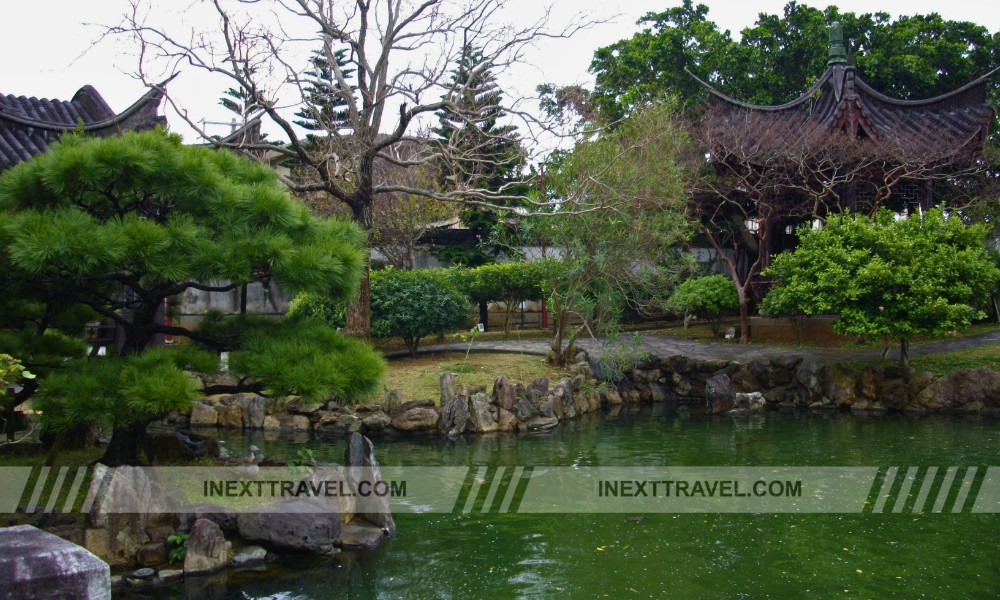
Designed by Chinese landscape architects and constructed using traditional methods and materials from Fuzhou, the garden authenticates a Ming dynasty garden. It features critical elements typical of Chinese gardens, including a central pond, stone bridges, meandering pathways, and various native Chinese flora. The layout is meticulously planned to create views that embody the Chinese garden design philosophy, where every turn reveals a new, carefully framed vista, encouraging contemplation and a deeper connection with nature.
The garden’s central pond is a focal point, surrounded by lush vegetation and featuring large koi that glide elegantly through the water, adding to the tranquil atmosphere. Pavilions and tea houses are scattered throughout the garden, allowing visitors to rest and admire the beauty. These structures are adorned with intricate wood carvings and tile work that illustrate traditional Chinese craftsmanship.
Fukushu-en Garden also includes several culturally significant sculptures, artworks, and gifts from Fuzhou, which add depth and historical context to the visitor experience. One of the highlights is the stone boat sitting on the pond’s edge, symbolizing the maritime journey that bridged the cultures of Okinawa and China.
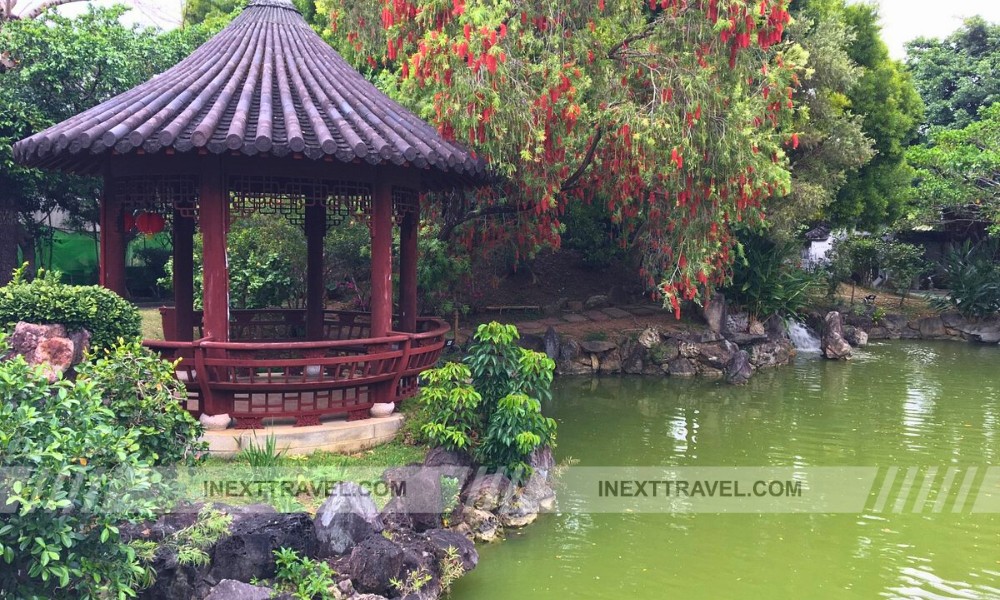
The garden is not only a place of beauty but also a venue for cultural events and festivals that celebrate and strengthen the bonds between Naha and its sister city. Traditional Chinese festivals, such as the Mid-Autumn Festival and Chinese New Year, are celebrated here, featuring dragon dances, Chinese tea ceremonies, and other cultural performances that bring the garden to life.
In summary, Fukushu-en Garden is more than just a beautiful space; it is a living bridge between cultures, offering a peaceful retreat and a profound cultural experience. It reflects the shared history and continuing friendship between Naha and Fuzhou, making it a must-visit for anyone interested in the rich tapestry of cultural influences that shape Okinawa.
Number 2: Kokusai Dori Street.
Coming in at number 2, Kokusai Dori Street stands out as the vibrant heartbeat of Naha. Known as “International Road,” this bustling main street pulses with the city’s energy, offering a dynamic slice of Naha life. Stretching over two kilometers, Kokusai Dori is lined with diverse shops, restaurants, bars, and street vendors, making it a must-visit for anyone looking to dive into the local culture and experience the lively atmosphere that defines Okinawa’s capital.
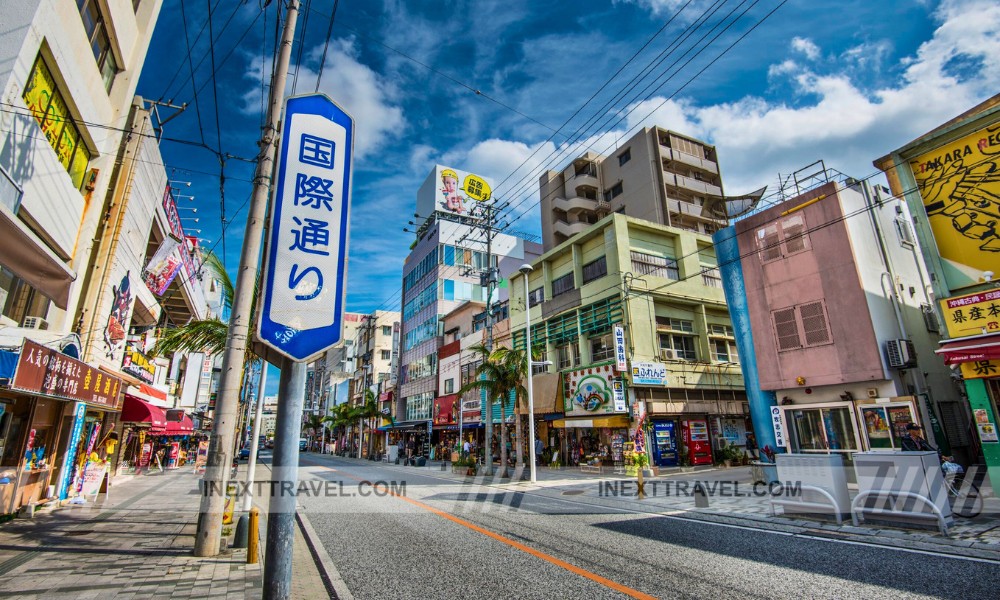
Kokusai Dori is more than just a shopping destination; it’s a cultural hub where locals and tourists converge to enjoy various activities. The street’s shops range from traditional Okinawan craft stores and boutiques offering local textiles like bingata and Ryukyu glassware to modern fashion retailers and souvenir shops. This makes Kokusai Dori the perfect place to find unique gifts and handcrafted goods that reflect the island’s rich artistic heritage.
The culinary offerings along Kokusai Dori are equally diverse. They feature traditional Okinawan cuisine, such as goya champuru (bitter melon stir-fry), Okinawa soba, and the ever-popular taco rice, alongside a broad array of international dining options. The street’s restaurants and eateries offer a chance to explore these local flavors in settings that range from quick street food stands to upscale dining establishments.
At night, Kokusai Dori transforms into a lively entertainment district, with neon lights illuminating the street and music drifting out from bars and live music venues. Visitors can enjoy everything from traditional Okinawan live performances, such as Eisa drum dancing, to contemporary music and dance, providing a vibrant nightlife scene that caters to all tastes.
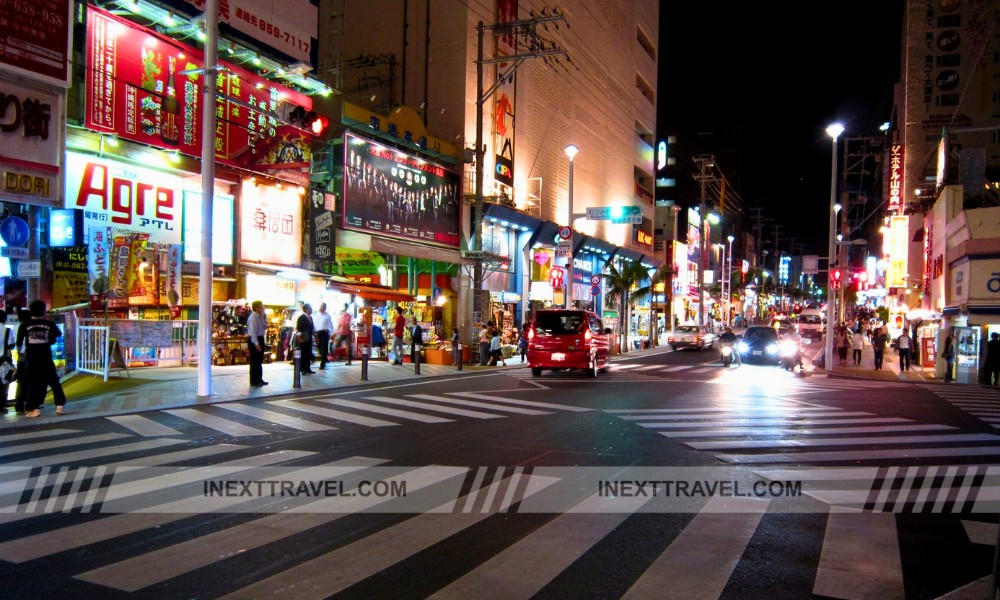
Throughout the year, Kokusai Dori hosts various cultural and seasonal festivals that draw crowds across Japan and worldwide. These events often feature parades, traditional performances, and unique market stalls, adding to the street’s festive atmosphere and offering visitors a deeper insight into Okinawa’s community and traditions.
In summary, Kokusai Dori Street is not just the commercial heart of Naha but also a lively cultural artery, offering an immersive experience of the city’s modern vitality and traditional charm. Whether you’re shopping, dining, or simply taking a stroll, Kokusai Dori provides a colorful and unforgettable snapshot of Naha’s life, making it an essential experience for every visitor to the city.
Number 1: Shuri Castle.
At number 1, the iconic Shuri Castle, proudly perched on a hill overlooking Naha, reigns as the most distinguished landmark and a profound symbol of Okinawa’s heritage and resilience. As the historical political and cultural seat of the Ryukyu Kingdom for several centuries, Shuri Castle is not only a physical structure but a pivotal piece of Okinawan history, embodying the spirit of a bygone era when the Ryukyu Islands played a crucial role in regional maritime trade and cultural exchanges between Japan, China, and Southeast Asia.
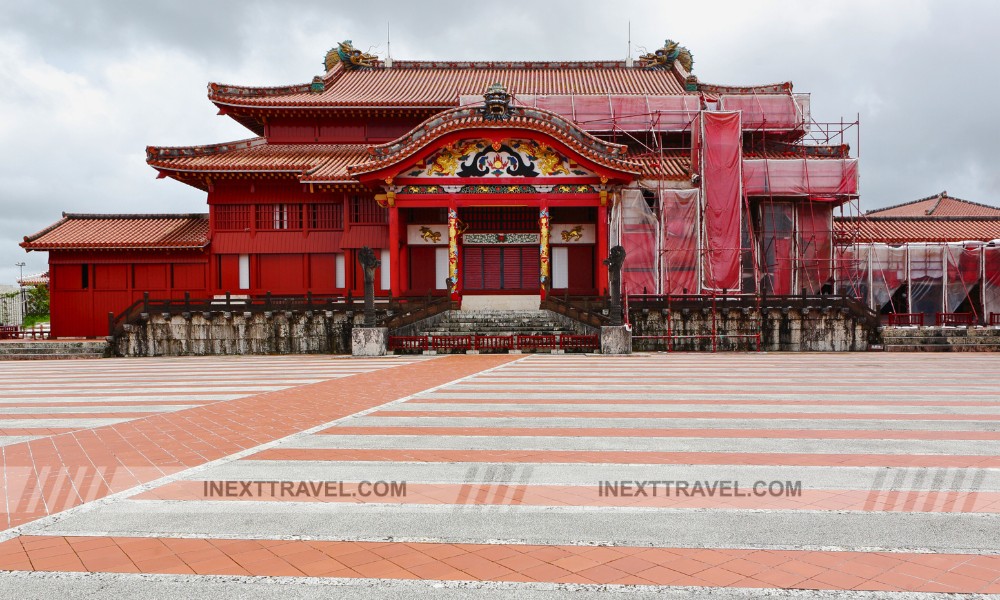
The architecture of Shuri Castle is a unique blend of Japanese and Chinese architectural styles, reflecting the diverse influences that shaped the Ryukyu Kingdom. The bright red and ornate decorations adorn its structures, making it distinct from mainland Japanese castles’ more subdued color palette. This vivid coloring and the grandeur of its design symbolize the rich cultural tapestry and the independent spirit of the Ryukyu people.
Shuri Castle’s significance extends beyond its historical and architectural value. It has been a focal point for Okinawan identity and pride, surviving multiple reconstructions following destruction, most notably during the Battle of Okinawa in 1945 and a devastating fire in 2019. Each reconstruction effort has been a testament to the resilience of the Okinawan people and their dedication to preserving their heritage.
Today, Shuri Castle is a popular tourist destination and a cultural education center. The castle complex includes several restored buildings, gates, and Ryukyu arts and crafts exhibitions. Its displays narrate the history of the Ryukyu Kingdom and its significance in regional geopolitics. Visitors can walk through the main halls, courtyards, and sacred sites within the castle grounds, gaining insight into the royal traditions and ceremonial practices of the Ryukyu rulers.
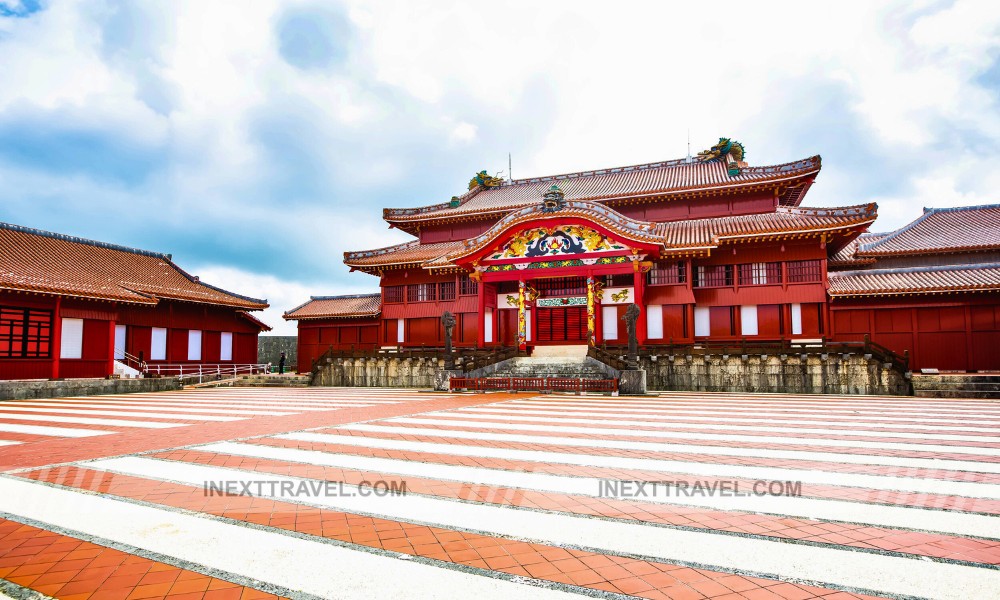
The castle also plays a central role in local festivities and cultural events, such as the annual Shuri Castle Festival. This festival features reenactments of historical ceremonies, traditional dance performances, and other artistic displays celebrating and educating about the Ryukyu heritage.
In conclusion, Shuri Castle is a historical monument and a living cultural symbol of Okinawa. It tells the story of a kingdom that once thrived as a hub of trade and cultural exchange and continues to inspire pride and resilience in the hearts of the Okinawan people. Shuri Castle offers visitors a majestic and enlightening glimpse into the soul of Okinawa, making it a must-visit destination that tops our list of beautiful places in Naha.
Conclusion
As we conclude our exploration of the ten best beautiful places in Naha, it’s clear that this city is a treasure trove of cultural richness and natural beauty.
Each location we visited tells a story of Naha’s past and present, from the historic walls of Shuri Castle to the serene paths of Fukushu-en Garden.
Naha offers visitors a diverse range of experiences, blending the vibrancy of city life with the tranquil beauty of historic sites and gardens.
Whether you immerse yourself in the lively atmosphere of Kokusai Dori Street, reflect on the quiet beauty of Shikina-en Garden, or step back in time at the Tsuboya Pottery District, Naha invites you to connect with its unique culture and stunning landscapes.
We hope this guide inspires you to explore Naha and discover these incredible spots that highlight the city’s charm and spirit.
Naha is not just a destination; it’s an experience filled with moments of beauty and cultural discovery that await at every corner.